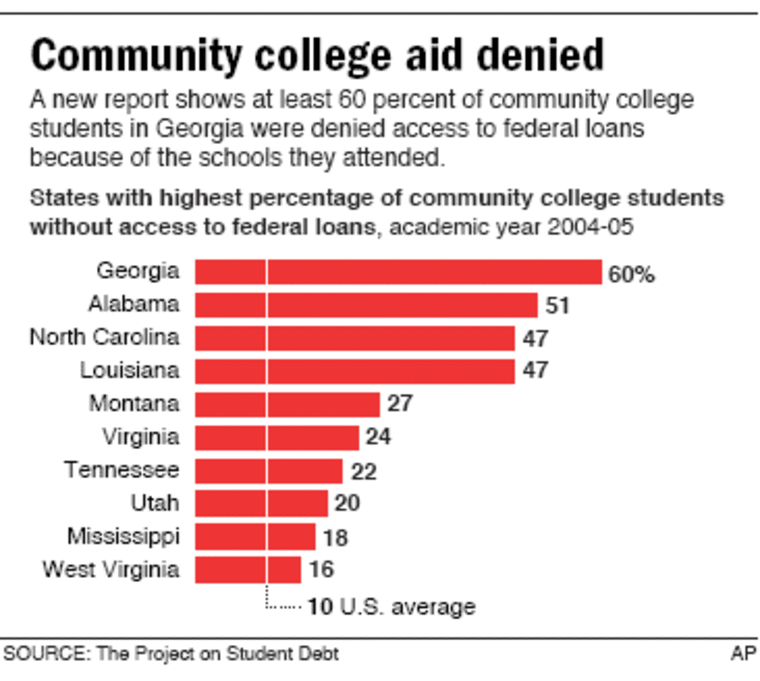For students who need to borrow for college, federal loans are almost always the best deal. But a new study finds that more than 1 million community college students — a disproportionate number of them minorities — can’t get such loans because their schools decline to participate in the federal loan program.
These community colleges have their reasons — including trying to protect students from borrowing too heavily.
But the report, to be released Thursday by the California-based Project on Student Debt, argues that such schools are denying students an important benefit. It said students who can’t get federal loans may have to work more or take on private loans and credit card debt.
The findings were criticized by national groups representing community colleges and financial aid administrators, as well as people who work at some of the colleges. They note community colleges are usually far cheaper than four-year schools, so it’s reasonable for some schools to tell students they shouldn’t be borrowing.
“I’m really concerned about default rates, and ... that students would see the dollar signs and not use it for educational purposes and maybe get in over their heads,” said Brenda DiSorbo, director of financial aid for all of the Central Georgia Technical College.
The report comes at time of intense focus on federal aid programs like subsidized and unsubsidized Stafford loans, which together accounted for about $50 billion in financial aid last year.
The credit crisis and subsidy cuts have forced dozens of lenders and guarantors out of the federally backed loan business, and the government is drawing up plans to ensure students can get such loans for school next fall.
So far, there’s no evidence eligible students won’t be able to secure loans because of the credit crunch. But this new report highlights students who can’t get federal loans because of the school they attend.
Affected students amount to just one in 10 community college students nationwide, but at least 47 percent of students in four states — Georgia, Alabama, North Carolina and Louisiana.
In Montana, 95 percent of white community college students attend schools where they can get federal loans, compared with just 8 percent of American Indians.
In Tennessee, the figure is 87 percent for white community college students but just 45 percent for blacks. Nationally, black community college students are more than twice as likely as whites to attend schools that don’t offer federal loans.
Low-income students “are the students who have the most to gain from having access to the federal loan program,” said Bob Shireman, executive director of the Institute for College Access and Success, which operates the Project on Student Debt. “The rates are low and fixed. There’s no credit check.”
Nationally, community college tuition and fees average $2,361 per year, according to the College Board — about one-third what public four-year colleges cost. After receiving aid, most community college students pay only a few hundred dollars for classes, and often use leftover aid from Pell Grants for things like books.
At South Texas College in McAllen, financial aid Director Miguel Carranza said he can’t be sure but he believes few students take out private loans. Offering federal loans would be unnecessary and potentially harmful.
“I come from a four-year institution — that’s what you see there,” he said. “You make the loans available, and whatever they qualify for, it’s not enough.”
But despite rising concerns about student debt, sometimes loans are a better option if they help students work less at outside jobs and finish a degree or transfer. At community colleges that offer federal loans, about 10 percent of students use them.
“Denying them federal loans does not prevent them from borrowing, it just forces them to take out other loans that are more expensive,” Shireman said.
Colleges’ concerns are understandable. If they are sanctioned by the government for disbursing too many loans that default, they can lose access to all federal aid programs — a disaster for any community college. But Shireman believes community colleges that have opted out of the loan program overstate the risk of such punishment.
In a statement, the American Association of Community Colleges said concerns about student debt are why some schools don’t participate — not fear of being sanctioned.
But, it added, “institutional review of their policies in this area could be timely.”
